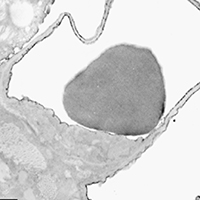Presence of N-acetylneuraminic acid in the lung during postnatal development

Submitted: 28 February 2020
Accepted: 18 April 2020
Published: 6 May 2020
Accepted: 18 April 2020
Abstract Views: 844
PDF: 441
HTML: 4
HTML: 4
Publisher's note
All claims expressed in this article are solely those of the authors and do not necessarily represent those of their affiliated organizations, or those of the publisher, the editors and the reviewers. Any product that may be evaluated in this article or claim that may be made by its manufacturer is not guaranteed or endorsed by the publisher.
All claims expressed in this article are solely those of the authors and do not necessarily represent those of their affiliated organizations, or those of the publisher, the editors and the reviewers. Any product that may be evaluated in this article or claim that may be made by its manufacturer is not guaranteed or endorsed by the publisher.
Similar Articles
- Huyi Liu, Xiangdao Cai , Jia Liu, Fengxiang Zhang , Andong He, Ruiman Li, The lncRNA MEG3 promotes trophoblastic cell growth and invasiveness in preeclampsia by acting as a sponge for miR-21, which regulates BMPR2 levels , European Journal of Histochemistry: Vol. 65 No. 4 (2021)
- Wenjing Liu, Yongchun Zhang, Cheng Liang, Xuefang Jiang, Developmental expression of calretinin in the mouse cochlea , European Journal of Histochemistry: Vol. 68 No. 4 (2024)
- W.J. Liu, J. Yang, Preferentially regulated expression of connexin 43 in the developing spiral ganglion neurons and afferent terminals in post-natal rat cochlea , European Journal of Histochemistry: Vol. 59 No. 1 (2015)
- David Cajas , Emanuel Guajardo, Sergio Jara-Rosales, Claudio Nuñez, Renato Vargas, Victor Carriel, Antonio Campos, Luis Milla, Pedro Orihuela, Carlos Godoy-Guzman, Molecules involved in the sperm interaction in the human uterine tube: a histochemical and immunohistochemical approach , European Journal of Histochemistry: Vol. 67 No. 2 (2023)
- G Stabellini, M Calvitti, E Becchetti, P Carinci, C Calastrini, C Lilli, R Solmi, L Vizzotto, T Baroni, Lung regions differently modulate bronchial branching development and extracellular matrix plays a role in regulating the development of chick embryo whole lung , European Journal of Histochemistry: Vol. 51 No. 1 (2007)
- E. Wyroba, P. Kwaśniak, K. Miller, K. Kobyłecki, M. Osińska, Site-directed mutagenesis, in vivo electroporation and mass spectrometry in search for determinants of the subcellular targeting of Rab7b paralogue in the model eukaryote Paramecium octaurelia , European Journal of Histochemistry: Vol. 60 No. 2 (2016)
- Yangying Peng, Shaojie Ding, Ping Xu, Xueyan Zhang, Jianzhang Wang, Tiantian Li, Liyun Liao, Xinmei Zhang, CCL18 promotes endometriosis by increasing endometrial cell migration and neuroangiogenesis , European Journal of Histochemistry: Vol. 68 No. 3 (2024)
- S. Salucci, P. Ambrogini, D. Lattanzi, M. Betti, P. Gobbi, C. Galati, F. Galli, R. Cuppini, A. Minelli, Maternal dietary loads of alpha-tocopherol increase synapse density and glial synaptic coverage in the hippocampus of adult offspring , European Journal of Histochemistry: Vol. 58 No. 2 (2014)
- Dajie Wang, Zhaofeng Zhou, Liang Yuan, Polydatin reverses oxidation low lipoprotein (oxLDL)-induced apoptosis of human umbilical vein endothelial cells via regulating the miR-26a-5p/BID axis , European Journal of Histochemistry: Vol. 66 No. 4 (2022)
- Carlo Pellicciari, Is there still room for novelty, in histochemical papers? , European Journal of Histochemistry: Vol. 60 No. 4 (2016)
<< < 4 5 6 7 8 9 10 11 12 13 > >>
You may also start an advanced similarity search for this article.

 https://doi.org/10.4081/ejh.2020.3124
https://doi.org/10.4081/ejh.2020.3124










